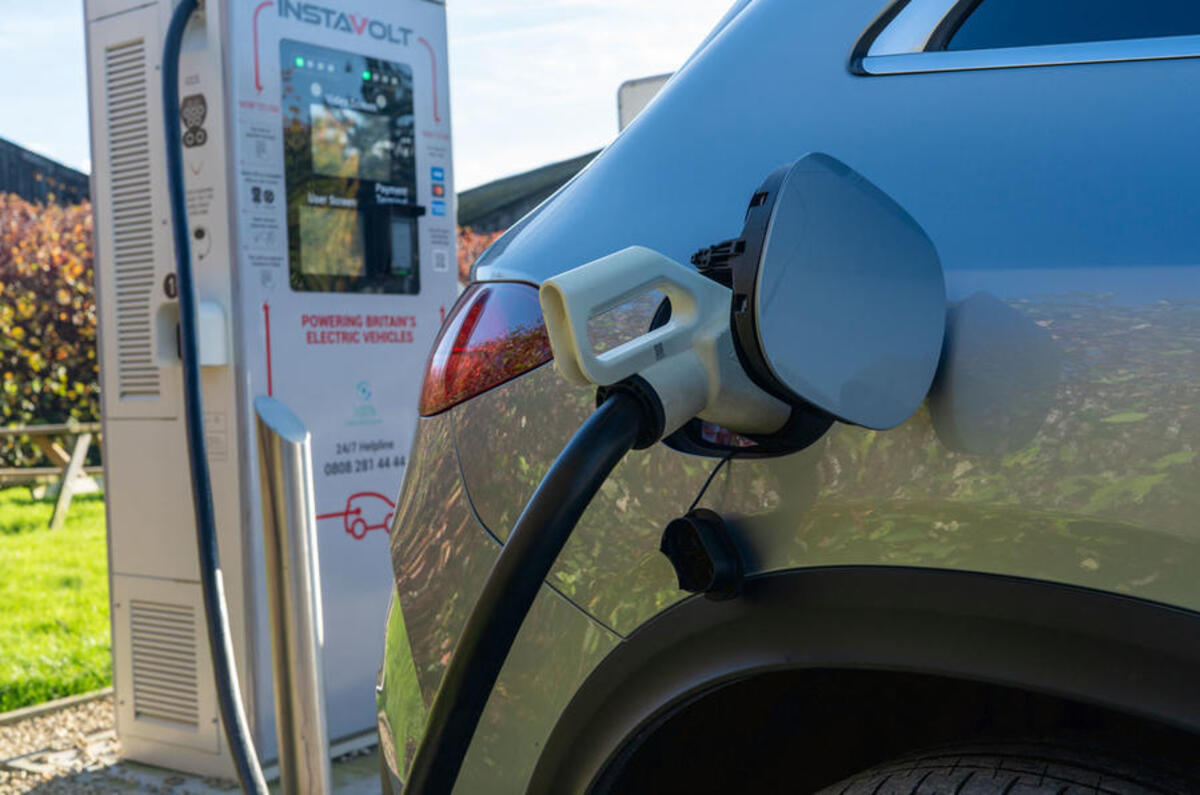His Majesty's Revenue and Customs (HMRC) has introduced a new rate for claiming back the cost of using public chargers for drivers who use company-owned EVs.
It follows criticisms that the single-tier system wasn’t matching what they were spending.
From 1 September, drivers will be able to claim 8p per mile for journeys where they charged at home or a higher rate of 12p for using public networks. It’s the first time the Advisory Electric Rate (AER) has differentiated between those two costs.
Both rates will be adjusted every quarter, using the weighted average efficiency for electric company cars over the last three years (currently 3.6mpkWh), domestic energy prices from the Office for National Statistics (27p per kWh) and the Zapmap Price Index for public chargers at 50kW or less (51p per kWh).
The AER’s simplistic approach to charging expenses has been controversial since it was introduced in 2018. HMRC’s single 4p-per-mile rate didn’t change until December 2021, when energy prices began to rise, and only introduced quarterly adjustments in December 2022.
This compares to the much more granular system of Advisory Fuel Rates (AFRs), which are different for petrol, diesel and liquefied petroleum gas (LPG) vehicles, and each fuel has three rates based on engine size. Those rates also apply to hybrids, including plug-in hybrids.
However, EVs’ efficiency can be just as variable as their combustion-engined counterparts.
For example, the new Mercedes-Benz CLA – one of the most efficient EVs available in the UK, at 5.0mpkWh – would cost 10p per mile on a public charger, based on the same Zapmap data used by HMRC, compared with 18p per mile for the least efficient version of its stablemate, the EQS SUV (2.8mpkWh).
The public charging AER also doesn’t account for the higher price for using ‘ultra-rapid’ chargers (with an output of more than 50kW), which are now increasingly common at motorway service areas.
Zapmap’s latest Price Index suggests an average cost of 76p per kWh for using ultra-rapid chargers. That’s almost 50% higher than the AER and equates to 15p per mile for an efficient EV like the CLA so wouldn’t cover the driver’s costs.
Fleets can pay higher mileage rates, adjusted to match what they’re really spending on fuel and charging, but must be able to prove it’s accurate to HMRC. Otherwise the excess can be taxed as additional income.
Paul Hollick, chair of the Association of Fleet Professionals (AFP), welcomed the announcement, saying: “This is very good news for fleets.
"We’ve been working alongside the BVRLA [British Vehicle Rental and Leasing Association] for some time to promote the idea of split public and private charging AER rates and, while it has been a long, long process, we’re delighted that HMRC has listened.”






Join the debate
Add your comment
Sorry we're all drivers, we all have to pay one way or another, we should all pay the same and have the benefits too.
Hey? Why should someone have to pay fuel costs incurred from their work from their own pocket.